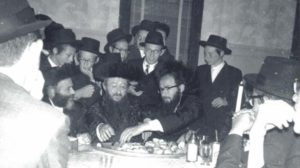100 Years of Light

Leader, Father, Rebbi- Rav Gershon Edelstein Z"L

Photos: Mattis Golberg, Flash 90, Mishpacha archives
Over the 100 years of his life,
Rav Gershon Edelstein accrued many roles and responsibilities, ultimately taking on the burden of leadership for the entire yeshivah world. But even as he dealt with Klal Yisrael’s thorniest dilemmas, he never abandoned his primary post as rebbi.
His was the story of quiet force, of influence without fanfare. It’s the story of a gadol hador who spent seven decades saying shiur to 17-year-olds – and whose words were so compelling, whose relationships so enduring, that alumni in their forties or fifties crowded into the room to keep learning. It’s the story of a man who demanded mastery of Shas from tender bochurim, but showed them, by personal example, how to achieve it with serenity.
And it’s the story of a leader whose knowledge of Torah was staggering – but never lost his ability to intuit the heart of a child.
One day at the end of 1943, Rav Shmuel Rozovsky, the prized student of Rav Shimon Shkop and brilliant maggid shiur, arrived in the dusty Israeli village of Ramat Hasharon. He knocked on the door of the local rav, Rav Tzvi Yehuda Edelstein, a noted talmid chacham and posek originally from the Russian town of Szumiacz near Smolensk.
Rav Rosovsky introduced himself and then got to business. Rav Yosef Shlomo Kahaneman was establishing a new yeshivah on a hill in Bnei Brak, he told Rav Edelstein, and had hired him to serve as rosh yeshivah. The yeshivah would be named Ponevezh after Rav Kahaneman’s original yeshivah in Europe, which was decimated by the Nazis, and he had high hopes for its future. He was looking for bochurim to serve as the kernel of the yeshivah. He knew the two sons of Rav Tzvi Yehuda, Gershon and Yaakov, as promising young Torah scholars, and the Chazon Ish had recommended that he bring them to the nascent yeshivah. Would Rav Tzvi Yehuda consider sending them?
At the time, the Edelstein boys were in their late teens, yet aside from a short stint in Lomza, they had never learned in a proper yeshivah. With the approval of both the Chazon Ish and the Brisker Rav, they had studied solely under their eminent father, achieving mastery, clarity, and great depth in Torah.
Now the time had come them to find their places in the nascent yeshivah world of Eretz Yisrael. Rav Tzvi Yehuda acquiesced; finally he’d found a fitting greenhouse where his special sons could blossom and grow.
He didn’t know it, but he had also provided the new institution with its future rosh yeshivah — and the Torah world of Eretz Yisrael with its eventual commander in chief.
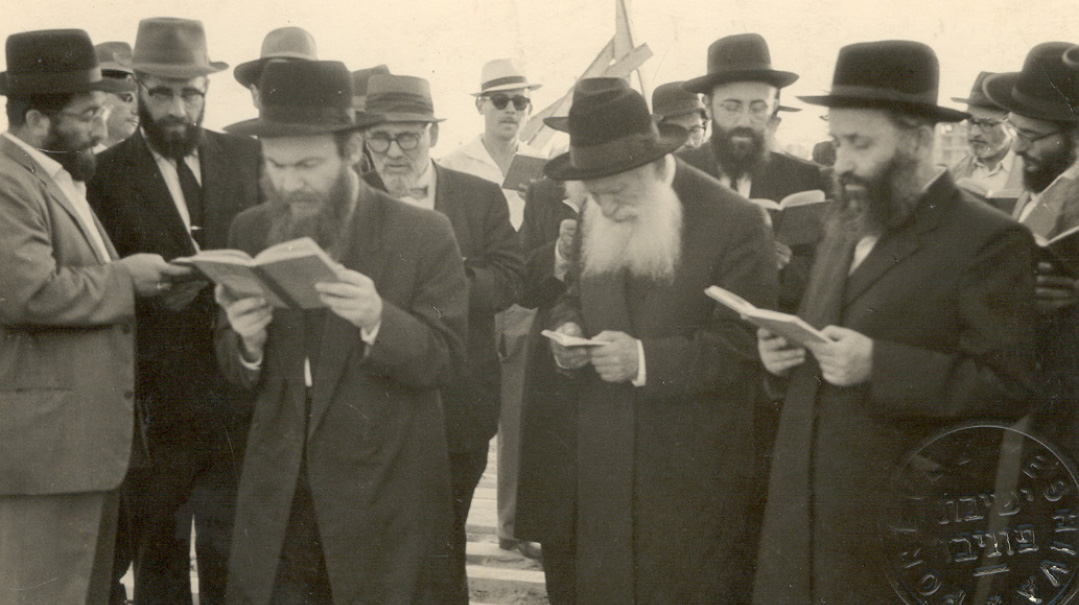
Rav Gershon, who emerged as the father of the yeshivah world in Eretz Yisrael, with the Ponevezher Rav and Rav Dov Povarsky
Primary Post
As the sole students of a dedicated father-turned-rebbi, Reb Gershon and Reb Yaakov Edelstein entered Ponevezh with a noted fluidity and coherence in their approach to limud Torah. For all those years, they had studied under one rebbi, moving from Chumash to Mishnah to Gemara under his tutelage.
Those years in Ramat Hasharon also equipped the brothers with something else that would serve them well: genuine ahavas Yisrael. There was just one shul in the village, where they joined their father for tefillos, sitting and listening to his daily Mishnayos shiur and interacting with the farmers and craftsmen and vendors.
When their father learned Maseches Kilayim in shul and discussed “arigah,” the weaving process, a local who’d had a knitting factory back in Poland and was familiar with the method was asked to explain it. The face of this Polish Jew shone as he helped the Rav clarify the complicated concept for the others.
Ponevezh was a thrilling new world for young Reb Gershon. Along with the shiurim, each one a revelation, there was also the influence and proximity of the Chazon Ish. The bochurim would often go to speak in learning with him, and it was the Chazon Ish who encouraged the older talmidim of Ponevezh to find time to speak with the younger ones. In a sense, it was that directive which shaped Reb Gershon.
From the outset, Reb Gershon was giving as well as taking, learning with typical hasmadah, but still very much the son of a community rav, with time and patience and heart for others.
And the Ponevezher Rav noticed.
The elder son of the Ramat Hasharon rav was asked to join the Ponevezh faculty in 1948 while still a bochur, delivering chaburos and shiurim. Months later, he married Rebbetzin Rochel — daughter of Rav Yehoshua Zelig Diskin, then the rav of Pardes Chana. When he left the world this week eight centuries later, he had added many titles and roles to his identity — yet still retained that primary post of first-year maggid shiur.
Many wonder how the rosh yeshivah of the vaunted Torah citadel of Bnei Brak, the final word of the Moetzes Gedolei HaTorah, and the elder gadol of a generation found the tools to relate to the 17-year-olds of the 21st century. But those who attended his daily shiur describe an encounter that was at once exalted and down-to-earth, a rebbi who held close to a century of Torah learning within, yet waited patiently to hear curious teenagers’ questions and suggestions. Despite his titles and despite the heavy burden of authority he held, during that daily shiur he was simply their teacher.
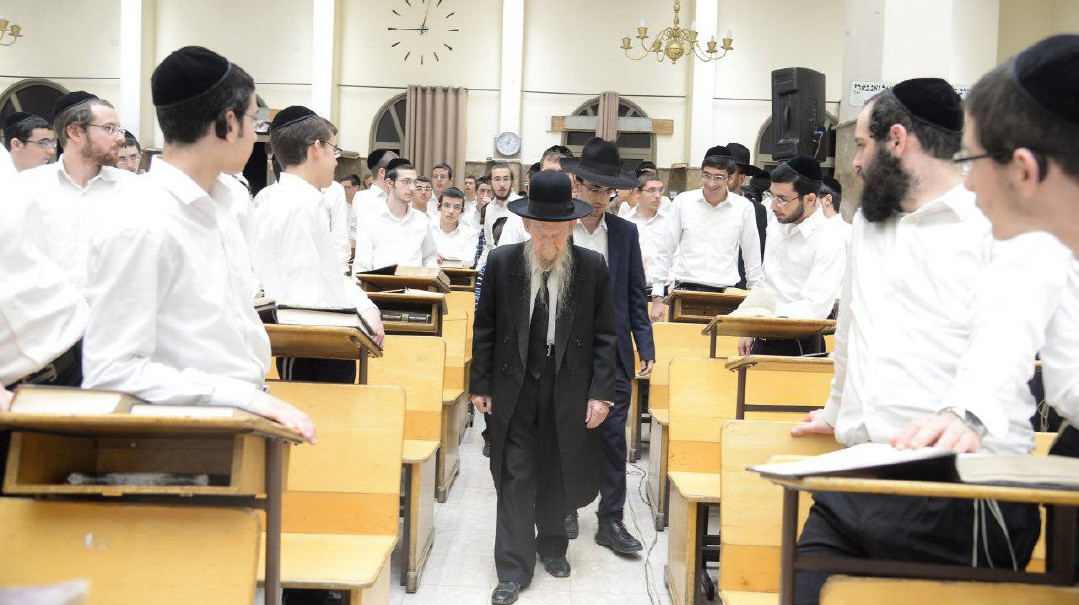
The Personal Bond
Reb Gershon’s emergence as the father of the yeshivah world in Eretz Yisrael — as keynote speaker at so many gatherings of mechanchim, mekarvim, and activists, and as the guide to a younger generation of roshei yeshivah — had its roots in the multivolume collection called Shiurei Rav Gershon.
“To appreciate the role of his shiurim, you have to understand what goes into Reb Gershon’s shiur,” a veteran talmid says. “In virtually every chinuch address, he made the identical point — that it’s not enough to present a clear, perfect path through the sugya and be a talented baal masbir. If there’s no personal connection with the talmid, the shiur won’t have the maximum effect.”
Reb Gershon himself often reminded mechanchim of their responsibility to create that bond. “Ask them how they’re feeling, what’s doing at home, if they’re happy — find the way to connect with them.”
Students at his first-year shiur describe the moment of Rav Gershon’s entrance to the room as “rommemus” — it was palpable loftiness right there among them. Here was the gadol hador, the elder rosh yeshivah of the generation, come down from the mountain to deliver a daily Gemara shiur to 17-year-olds.
His shiurim, they say, were not theatrical. There was no lightning or thunder when he spoke; he was a measured and calculated person who rarely showed overflowing emotion. But they were masterpieces of clarity, with depth and chiddushim hiding in plain sight between the lines.
“He learned Shas in depth before he heard any vort,” one of Eretz Yisrael’s most popular maggidei shiur told Mishpacha. “He mastered the Ketzos and Rabi Akiva Eiger before being exposed to the more contemporary, ‘yeshivish’ Torah. He first went to yeshivah at 18, when he was fully developed as a talmid chacham, so there’s no ambiguity or vagueness in the way he sees the sugya — and that’s what he transmits to his talmidim.”
Along with the exceptional clarity of his shiurim, the warm feelings of affection for his students were undeniable. A master mechanech, Rav Gershon’s shiur was not a frontal lecture. He welcomed and encouraged the bochurim to pose questions, and didn’t answer immediately. He wanted everyone in the room to understand the question, to think it through — to feel the tension and unease — before coming to a resolution. When all the complexities were resolved, they all felt that joy of clarity together.
As Ponevezh grew, shiur alef was split into two, and Rav Gershon taught one group the first half of the year, switching to the second group in Adar. In recent years, there could be 150 boys in one shiur — and yet they noticed how his eyes roved the room as he spoke, gauging how well each boy comprehended his words.
When shiur had to be held in his home, all 150 of those boys crowded into the little apartment, squeezing into the kitchen and bedrooms, where every precious word was broadcast with a microphone. And Rav Gershon, ever the mechanech, arranged for a microphone to be given to the boys as well, so those with questions could be heard throughout the apartment. The bochurim remember, with affection and awe, the way the commander in chief of the Torah world waited patiently for the microphone to be passed among them.
“Too often,” the Rosh Yeshivah told a gathering of yeshivah heads a few years ago, “it’s the best talmidim and the worst talmidim who get the rebbi’s attention — the metzuyanim with their questions, and the challenging ones with disciplinary issues — but in truth, the majority of talmidim are somewhere in the middle, and they are no less deserving.”
Rav Gershon’s nephew, Rav Avraham Diskin, rosh yeshivas Ohr Shmuel in Jerusalem, relates that there was a bochur who learned in his yeshivah with tremendous hasmadah, and after a few years, he moved to Ponevezh. When Rav Diskin next visited his uncle, Rav Gershon said, “I noticed that this bochur’s hasmadah is not natural. I’m afraid that if he continues this way, he might experience some sort of deterioration.”
Half a year later, indeed, this boy collapsed and was unable to return to learning for several months. Rabbi Diskin recalls, “I was amazed at the fact that I knew the bochur for three years and it didn’t enter my mind that his hasmadah was not natural, while the Rosh Yeshivah barely knew him for a few months, as one of hundreds of bochurim in the shiur — and from the start, he noticed that something in his incredible diligence seemed forced.”
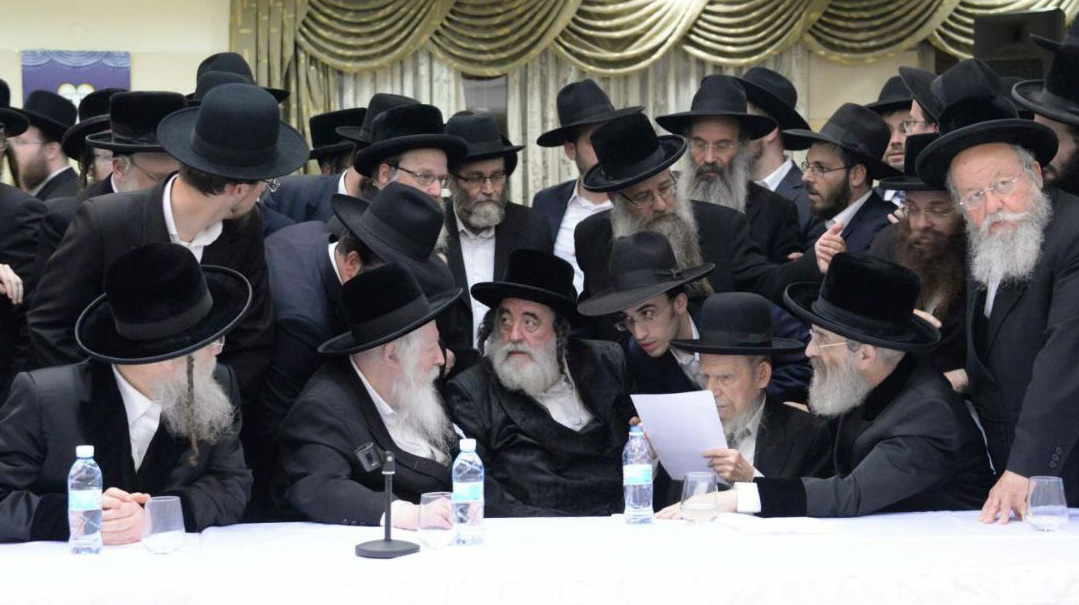
Rav Gershon’s quiet force and staying power wielded influence without fanfare but with steadfastness and consistency. Mechanchim and rebbes alike sought his agenda-free advice
Battle Cry
Upon the news of Rav Gershon’s passing this week, Rav Chaim Peretz Berman, a maggid shiur at Ponevezh, described the levayah of Rav Shach in 2001. Many of the maspidim spoke about the various battles that Rav Shach waged over his lifetime — be they spiritual, political, or strategic. When Rav Gershon stood up to speak, he focused on a different battle: the battle to encourage bochurim to learn a lot. To cover ground. To achieve mastery of large tracts of Torah.
That battle became Rav Gershon’s as well, and while the media may have covered his policy decision when it came to chareidi interactions with the government, within the Torah world he was known for the battle cry of “Know Shas!”
In that sense, he was working against the tide. In a world where many yeshivos focused on painstakingly peeling back the layers in one sugya, achieving depth at the expense of breadth, he made ambitious demands of the bochurim. He fully expected them to learn all of Shas. “A bochur must know Shas,” he said often, adding encouragingly, “and it’s not such a hard thing.” He urged them to utilize Friday and Shabbos to meet that goal.
Some masechtos in the yeshivah syllabus contain sugyos that are considered somehow “less critical” — focusing on topics not related to the main themes. Many maggidei shiur will gloss over these sugyos or move quickly past them. Rav Gershon never did that. “They are a part of the masechta,” he said. “And here, we learn everything.”
He learned quickly and thoroughly, and didn’t believe in getting delayed or distracted from the overall flow and pace. That was the path he set for his students as well: he made it very clear that he expected them to finish the yeshivah masechta. Be it after seder, over Friday and Shabbos, during their free time — the important thing was to finish.
Bochurim would ask, “If that means I’ll only learn Gemara and Rashi, without Tosafos, should I still do it?”
And he would answer, with a half-smile and twinkle in his eye, “Rashi was also a lamdan.”
It was crucial — and it was doable! — to know all of Shas, he kept urging them. Yet even as he made intense demands, he told the bochurim to conduct themselves with an attitude of calm and serenity. And his personal example melded those two seeming opposites. He set — and met — incredibly demanding personal goals in both learning and behavior, but never broadcast even the slightest sense of tension or pressure.
Even as he told the boys that could and should master all of Shas, he also reminded them of the recommendation to take a daily walk. “And when you walk,” he said, “don’t listen to a shiur.” They could listen to music, or even better, take the time to think, to hear their own inner voice.
That inner voice featured again when he said that along with the yeshivah syllabus, he believed that a bochur should learn “mah she’libo chafetz,” the area of Torah that his heart feels drawn to. He would often tell the story of a bochur who just didn’t connect to the iyun style of learning, and was drawn to halachah instead. Rav Gershon encouraged him to follow his inclination and he eventually became a respected posek.
While Rav Gershon enforced Rav Shach’s vision of Ponevezh as a place where mastery of Torah was paramount, he also was a living example of the primacy of mussar. In fact, talmidim say he mentioned it in every shiur. “A person who learns mussar will be in a state of aliyah, of growth,” he told them. “A father who learns mussar will see it influence the entire atmosphere in his home. Without mussar, there is no life.”
He’d often tell the students about a bochur who barely learned, yet made sure to attend mussar seder every day. “Why do you bother to come?” someone asked him. “Because this is what revives me, what gives me life,” the bochur said.
“This bochur,” Rav Gershon said, “in time became a mezakeh rabbim in both Torah and yiras Shamayim.”
He would mention names of specific sifrei mussar, but then, as was his habit, told the bochurim that each should pick the sefer that he felt most connected to. Because the end goal was that internal connection that could only come from personal choice.
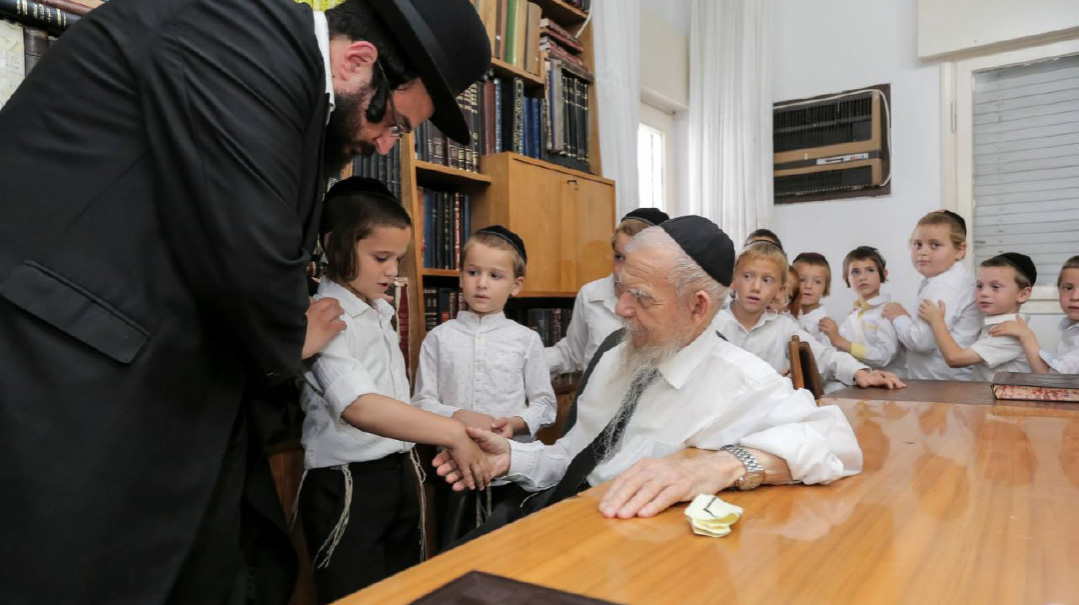
To Feel a Child’s Heart
Yeshivah lore has it that when he was a young father, Rav Gershon’s evening meal consisted of the leftover crusts of his children’s sandwiches along with a glass of tea. Not because he sought to deprive himself, and not because he wanted to teach them a lesson. It’s because for him, the words of Pirkei Avos were real: as someone sustained fully by Torah, all the physical sustenance he needed was a dry crust of bread.
But he understood and accepted that other people needed more. His own personal standards of simplicity did not shut him off from intuiting and respecting others’ needs. That intuitive understanding made him an address for parents and educators seeking a guidebook for struggling teenagers immersed in the most hedonistic of pursuits. Somehow, in the Spartan home in Bnei Brak, in the man who subsisted on crusts of bread, they found a mentor who could understand the heart of the most wayward and materialistic of children.
There are countless stories of roshei yeshivah, maggidei shiur, and chinuch figures who came to seek the Rosh Yeshivah’s advice, and found him firmly opposed to expelling a bochur, embarrassing a bochur, or punishing him in a way that will shame him. Every other option must first be considered, and it’s never acceptable to give an order with the wave of a hand such as, “he’s not the right type,” “he’s a bad influence,” “throw him out of yeshivah.” Every case was discussed in context, very carefully, and sometimes drained him to the point of exhaustion.
In a meeting that became the talk of the day, Rabbi Avi Fishoff, who works with struggling children, brought a long list of questions to Rav Gershon. He felt Rav Gershon could direct him in his vital work after reading the words Rav Gershon wrote: “Yeled she’niskalkel, linhog imo b’kavod v’yedidus — we should treat a child who’s strayed with respect and friendship.” Everyone in this delicate field gained from the wisdom of this gadol at the helm of the yeshivah world who could intuit the hearts of Klal Yisrael’s estranged children.
When Rabbi Noach Paley, chairman of the Lev el Heneshama Organization for struggling youth, asked Rav Gershon how to relate to a young man who’s discarded the traditional yeshivah garb, Rav Gershon avoided recrimination or reproof. Instead, he said, “The importance of a yeshivish appearance needs to be explained to him.”
This reflected a major element in the Rosh Yeshivah’s approach to chinuch, one he repeated often at chinuch seminars. It is unfair, he explained, to say a talmid or talmidah doesn’t want to do something, or rejects an idea, if that concept was never properly explained to them. The onus of explanation rests on the parent or educator trying to transmit the idea, and with proper preparation and work — as the maggid shiur well knows — anything can be made clear.
And his incredible sensitivity toward other Jews and their pain was legendary.
A young man close to the Rosh Yeshivah was deliberating whether to move to a different area, and asked for advice. He prepared a list with 15 considerations for each side in his deliberations. At the bottom, he added a puzzling consideration: “I once stayed in that area and the neighbors claimed that my children made noise when they were playing in the yard.”
The Rosh Yeshivah read this, recoiled, and asked: “They made noise and it bothered the neighbors? Run and ask a rav before you even think about moving there!”
The young man asked a rav who ruled that there is no problem with children making the appropriate noise when playing. He went back to the Rosh Yeshivah with the rav’s ruling, but Reb Gershon again read the last piece, and recoiled once again. “It disturbs the neighbors! It bothers them… chalilah! Stay far away from them! Don’t cause pain to other Jews!”
One day, an avreich asked him a sensitive question. A teacher had been fired in one of the Chinuch Atzmai schools, and his wife had been asked to take her place.
“Chalilah!” the Rosh Yeshivah exclaimed. “Jewish blood is still bubbling in that classroom…”
“But the teacher was fired without any connection to my wife! She was fired before my wife was offered the job,” the avreich claimed.
“That is true,” the Rosh Yeshivah replied, “and they probably had no choice but to fire her… But an avreich like you, nu, you have to stay sensitive. Jewish blood was spilled there!”
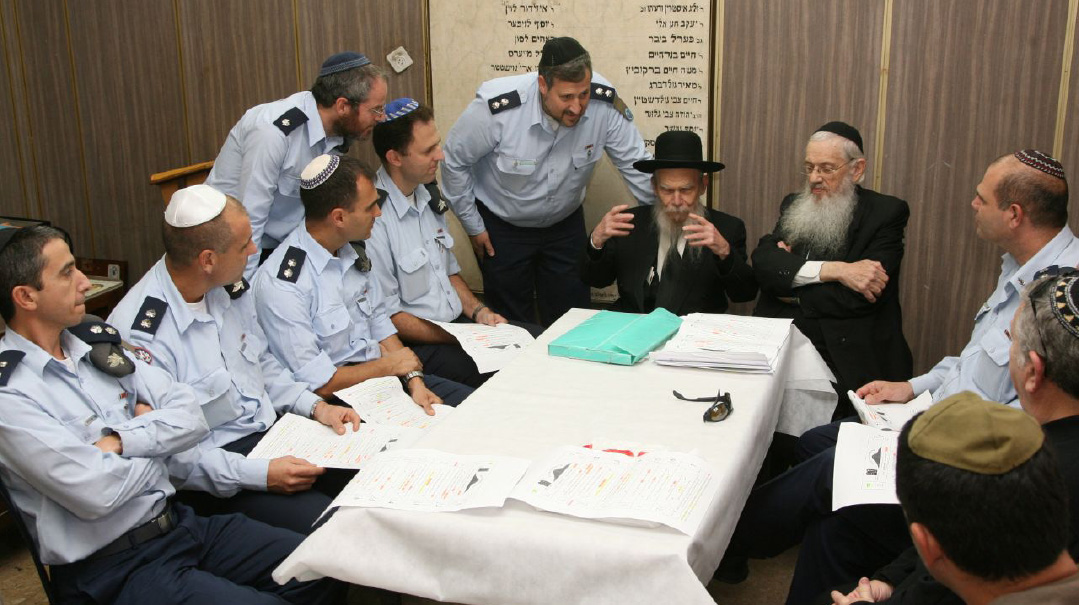
Staying Power
For decades, Rav Gershon served as the baal tokeiah in Ponevezh, blowing strong and true notes despite his age. The Chazon Ish would go specially to hear his tekios, and the sounds of his tekios have inspired generations since, even as his strength has waned. The Rosh Yeshivah and gadol also helped young men who wished to learn how to blow shofar, transmitting the secrets of the trade, the wisdom of tekios.
“The Gemara says that blowing the shofar is a ‘wisdom not a skill,’ ” he would tell them. “When you know how to do it, there is no reason to exert yourself. It doesn’t have to feel heavy and difficult, but the opposite.”
It’s not the flashiest piece of advice, but Rav Gershon’s story had never been that of a charismatic speaker or sparkling, witty maggid shiur.
His was the story of a quiet force and staying power, of wielding influence without fanfare but with steadfastness and consistency. It’s the story of a gadol hador who spent seven decades saying shiur to 17-year-olds — and whose words were so compelling, whose relationships so enduring, that alumni in their forties or fifties crowded into the room to keep learning. It’s the story of a man who demanded mastery of Shas from tender bochurim — but showed them, by personal example, how to achieve it with serenity.
Several weeks ago, a contingent of bitter Leftists demonstrated against proposed budget increases to the yeshivah world. The location they chose was the Torah citadel of Ponevezh, and the focus of their ire was Rav Gershon.
Rav Gershon’s only response was to encourage learning.
This week, the real response took place, the true demonstration of our deepest values, as masses of faithful Jews headed to the same hill in Bnei Brak to pay tribute to the person who showed them — by his personal example and through his years of molding yeshivah students, yeshivos, and the yeshivah world — how Torah learning shapes raw matter into people of purpose, passion, and dignity.
How it can shape people, and sometimes it can even build angels who walk this Earth.
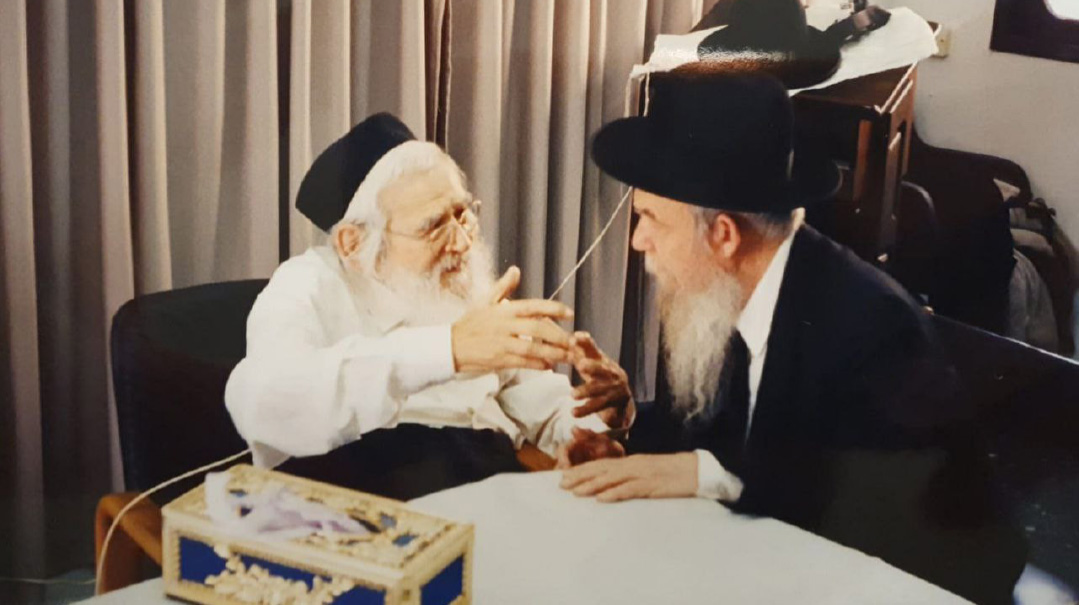
Rav Gershon enforced Rav Shach’s vision of Ponevezh as a place where mastery of Torah was paramount, and added a mussar twist
Yeshivah in a Chicken Coop
Rav Gershon’s early years
Rav Gershon Edelstein was born in the Russian town of Szumiacz near Smolensk, where his father, Rav Tzvi Yehudah Edelstein, served as av beis din. Yaakov and his brother Rav Gershon shlita — longtime rosh yeshivah of Ponevezh and one year his senior — spent their early years learning Torah with their father once the town came under Communist rule and all the chadarim were closed down. In 1932, after the death of their mother, Rebbetzin Miriam (daughter of Melstovka av beis din Rav Mordechai Shlomo Movshovitz), the young Rav Tzvi Yehudah, his two sons, daughter Pesia (Gershonovitz, a”h) and his mother managed to obtain passage on a ship from Odessa to Eretz Yisrael.
As they had not registered with any of the political movements at the time, they had to fend for themselves for a place to live, and although relatives who came to greet them at the Haifa port offered to share their own tiny apartment with the new arrivals, there was really no room for all of them — and so the family split up, with Pesia going to one relative and her grandmother to another.
Rav Tzvi Yehudah refused to part from his two sons, however, and searched for a place where the three could live together so that he could continue to teach them Torah. Nothing, he said, could compensate for learning with his sons.
Soon the small fragmented family found themselves a home — an empty chicken coop in the village of Ramat Hasharon. A few crates from the owner of a nearby orchard served as beds, chairs, and a table, but father and sons needed nothing more, as long as their days could be filled with learning Torah in freedom.
A short time later, Rav Tzvi Yehudah was asked to serve as the rav of Ramat Hasharon, but even once they settled into proper accommodations, the young brothers continued learning with their father — their exclusive spiritual guide and mentor. There were few religious families nearby aside for some who were elderly, and the only school was a government one — and so the brothers stayed home and continued learning from morning to night, daf after daf, perek after perek, masechta after masechta.
One morning when Rav Tzvi Yehudah came into shul, he noticed a new sefer on the table. The title was Chazon Ish — but how did a sefer of this gadol from Russia get to Ramat Hasharon? One of the mispallelim told the rav that he had brought it from nearby Bnei Brak. He noted that he had met the author, who had recently arrived in Eretz Yisrael, and purchased his sefer as a gesture to help out the humble talmid chacham newcomer with a few extra lirot.
The rav didn’t waste any time, wrote down the author’s address, and traveled to Bnei Brak with his sons to meet the gaon from Vilna. The Chazon Ish warmly welcomed the rav of Ramat Hasharon and spent time speaking in learning with his sons. Their knowledge and the standard of their learning astounded him, and he was shocked to hear that they had never stepped foot in a yeshivah, save for a short period of time when they learned in cheder in Russia.
“I feel that perhaps I am making a mistake,” Rav Tzvi Yehudah told the Chazon Ish. “Perhaps I’m preventing their growth in Torah by not sending them to yeshivah.”
But the Chazon Ish reassured Rav Edelstein that he was doing the right thing, and encouraged him to continue learning with his sons at home until they got older. Those days of their home beis medrash continued until Elul of 1942, when the bochurim, aged 17 and 16, went to learn in Yeshivas Lomza in Petach Tikva — the first time they’d ventured into a learning framework outside their home. It was Rav Gershon who petitioned their father for the change, and his winning argument was a question of hasmadah — he told his father that because of the rav’s many communal responsibilities including piskei halachah and hashgachah on shechitah, their learning was often interrupted. In yeshivah, they’d be able to learn round the clock.
The Chazon Ish agreed to the change, but told them, “You’ve already learned a derech halimud from your father. Just make sure not to ruin it in yeshivah.”
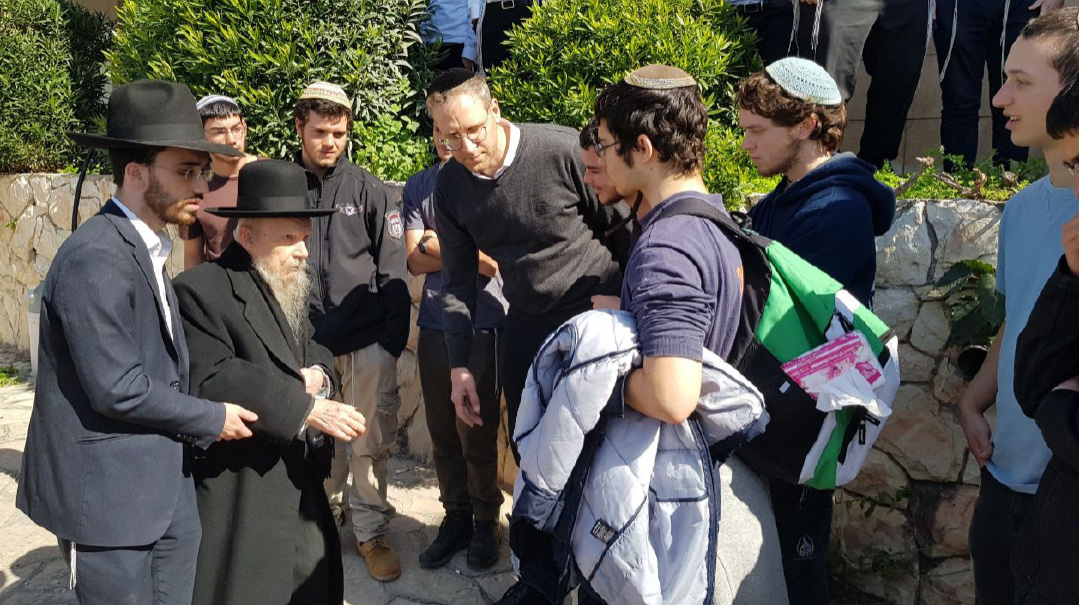
The rav who subsisted on crusts of bread nevertheless had an intuitive understanding of even the most materialistic-driven struggling teens
For the Next Hundred Years
By Gedalia Guttentag
“There are many individual stories to tell about Rav Gershon Edelstein, but the most important is his life story,” says Rabbi Tzvi Cohen, who for years spent hours each day with the Ponevezh Rosh Yeshivah.
“For almost a century, he was involved in teaching the next generation. He was one of the greatest mechanchim of all times.”
What would be an exaggeration in any other context is a fair way to describe the unassuming gadlus of the Ponevezh Rosh Yeshivah, who may have held a record for the sheer number of his talmidim and for his longevity on the front lines of the yeshivah world.
Propelled in his late teens by the Chazon Ish into the world of chinuch as a maggid shiur in Ponevezh for weaker bochurim, Rav Gershon Edelstein would spend the rest of his long life doing what he believed in most: teaching beginners in shiur alef, and molding the next generation.
With numerous bochurim in his daily shiur for close to eight decades, that meant tens of thousands of direct talmidim — meaning that Rav Gershon had an outsized, firsthand role in shaping the vast Torah world of today.
But the immense numbers didn’t diminish his sense of responsibility to them as a rebbi. He was caring, talmidim could ask him anything, and he was concerned for their material welfare and shidduchim.
Rav Gershon used his phenomenal memory for mishpachology — he was famed for remembering generations of a bochur’s antecedents to suggest and give information on shidduchim. When talmidim made a bar mitzvah, he would give the bochur a sefer with an inscription. On the few occasions when a gift wasn’t at hand, he would remember to give the sefer even years later.
“The fact that for over 80 years he taught bochurim with the same enthusiasm and freshness is miraculous,” says Rav Eliezer Roth, a talmid and mechutan of the Rosh Yeshivah.
“My father heard shiur from him, as did I, and my son as well recently. Reb Gershon had tremendous clarity — when he was in the beis medrash in the afternoon seder, he would answer a question from anywhere in Shas with total recall. And he retained the clarity, and total dedication to giving his daily shiur, until almost his last day.”
A master of education, the Rosh Yeshivah knew that the best tool in chinuch was to make Torah learning a two-way process. Every time he finished a section of the shiur, he would rap on the table and say “Nu — dibbuk chaveirim!” That was code for the intense discussion among the bochurim, with himself as the maggid shiur, that would bring clarity to the topic at hand.
Teaching Torah to the next generation was so paramount that even later in life, when he took on the leadership of vast sections of the chareidi world, the daily shiur came before any crisis.
“He davened Shacharis at 7 a.m., was sandek at a bris, then sat down to prepare the shiur at 9 a.m., and delivered it in the yeshivah from 12 until 1 p.m. — nothing could break that schedule,” recalls Rabbi Tzvi Cohen. “Not war, a Covid crisis, or simchah.”
That approach to balancing Torah and communal leadership was evident to Degel HaTorah MK Rabbi Uri Maklev first hand. As a talmid from Ponevezh and a chavrusa of Rav Edelstein’s sons, he’d developed a close relationship with the future leader of the Israeli yeshivah world, which continued as Maklev went on to represent the chareidi world in the Knesset.
“Just last week I was in his house to consult on the ongoing political difficulties, but his priorities were clear,” says Maklev. “Only once he’d finished learning late at night was he free to discuss matters. To see him was to understand what it means to keep learning sedorim at all costs.”
Noted for his combination of deep perspective and calm demeanor, Rav Edelstein brought those qualities to the political crises of the last few years involving Covid, then repeat elections, and the resurgence of the army draft issue.
“He was a wondrous man,” says Uri Maklev. “He had a very lucid, practical mind and he drew from his daas Torah to deliver very clear direction to us on public issues.”
The laser-like focus on learning Torah was something that the Ponevezh Rosh Yeshivah labored to instill in his students — that, and an emphasis on developing good middos.
“Everyone wants to be happy,” he would say. “And people look to money and honor to deliver that. But it’s wrong — only Torah and good character traits will make a person happy.”
Those weren’t mere slogans to him; anyone who witnessed his gentle smile, the repose of his face, or the modest apartment he lived in, could see someone who’d pared back life to only the meaningful, essential elements — a gadol who lived his own teachings.
That was why, alongside the struggle to focus on Torah learning as the ultimate end of life itself, Rav Gershon hammered home, in shiur after shiur, the need to think of others.
“There was one man recently who needed to buy a house, and asked for a brachah to win the state lottery for cheap apartments,” says Rabbi Cohen. “The Rosh Yeshivah said to him, ‘If you win, that means another person loses — I’ll give you a brachah that you get a house without needing that program.”
Another major theme was vatranus — stepping aside for another. “My sister couldn’t find a shidduch, and came to Rav Edelstein for a brachah,” Rabbi Cohen recalls. “He told her that if she were to give her younger sisters permission to go on shidduchim first, that would be a zechus. Weeks later, both she and the younger sister were engaged.”
The incident, the Rosh Yeshivah said, was no mofes: “My life experience has shown simply that when people are mevater, they don’t lose.”
For the Ponevezh Rosh Yeshivah who gave his life away to teach young talmidim, never seeking to rise higher because chinuch for beginners was the highest goal, the idea of focusing on himself was anathema.
“He spent a century focusing on the sugya at hand, never speaking about himself — just building the next 100 years.”
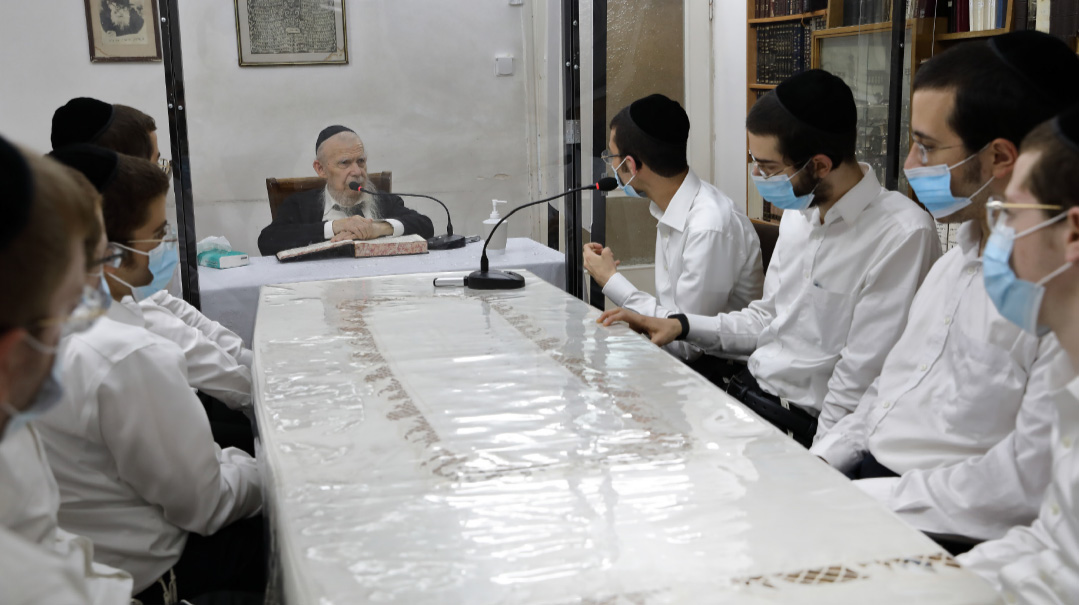
How did the elder gadol of the generation have the tools to relate to the teenagers nearly a century his junior? Because during the daily shiur – which he gave during COVID and up to a week before his petirah, he was simply their teacher
Reason for Refusal
We couldn’t publish the details of this story when it took place, but now, unfortunately, the time has come. The purity of Maran Rosh HaYeshivah’s character was incomprehensible. But we witnessed it firsthand.
Elul 5776.
The editors and managers of the Hebrew-language Yated Ne’eman sat across from the Rosh Yeshivah in confused amazement at his firm and resolute refusal of their predictable request. They had simply asked Rav Gershon, whose wisdom had guided the newspaper in recent years, to share a few words of brachah with their readers, in honor of Rosh Hashanah. But the Rosh Yeshivah did not agree to any of their suggestions. His instructions were unequivocal: There should be no mention of him, in any form, in any of the Yom Tov editions.
Eventually, the editors gave up and left. Shortly thereafter, one of the members of the Yated team who was close to Rav Gershon returned and asked, “Kevod Harav, what is the reason for this refusal? So many people can gain and learn from the divrei Torah we are asking for.”
Rav Gershon responded, “Six months ago, before Pesach, Mishpacha prepared an article about me. For various reasons, I asked them not to publish it, and they complied with my request. It would be really unpleasant for them to see that you did publish something about me.”
Keep in mind, Yated was Rav Gershon’s newspaper. Anyone would understand the difference, and wouldn’t think twice of the preferential treatment in this case. But no, Rav Gershon did not want to cause a trace of unpleasantness to anyone.
Now we can share the backstory. A beautiful cover story about Rav Gershon was indeed prepared for Mishpacha's Hebrew-language Pesach issue prior this encounter. Somehow, he found out about it two days before it was scheduled to go to print, and Rav Gershon himself called the chairman of the Hebrew edition’s rabbinic board, Rabbi Menachem Cohen shlita, with whom he had been acquainted since the early days of Ponevezh.
“This is Gershon Edelstein speaking. For personal reasons, I request that you do not publish the article.”
We obeyed, of course. What’s the question?
The Rosh Yeshivah apologized profusely for any inconvenience and even invited us to his home. On Lag B’omer 5776, we indeed went to see him, and despite his weakness, he welcomed us warmly and at length, discussing various matters at hand.
We thought that was the end of the story, and we had almost forgotten about it, until we heard of his refusal to appear in the Yated the following Elul. It was a firsthand demonstration of the middos the Rosh Yeshivah sought to instill in our generation.
(Originally featured in Mishpacha, Issue 963)
Oops! We could not locate your form.






